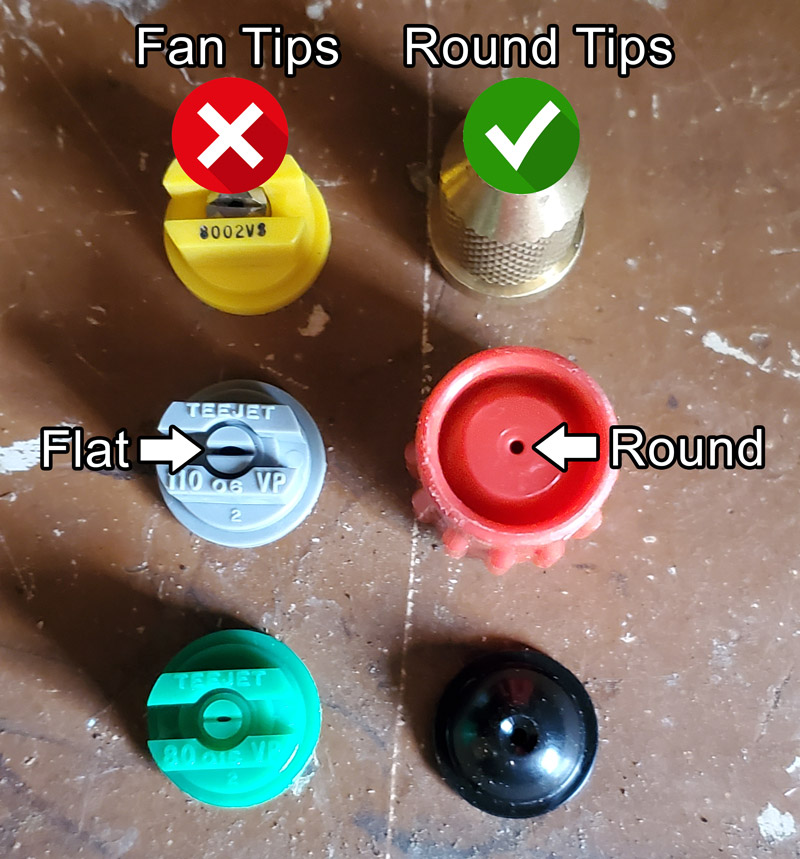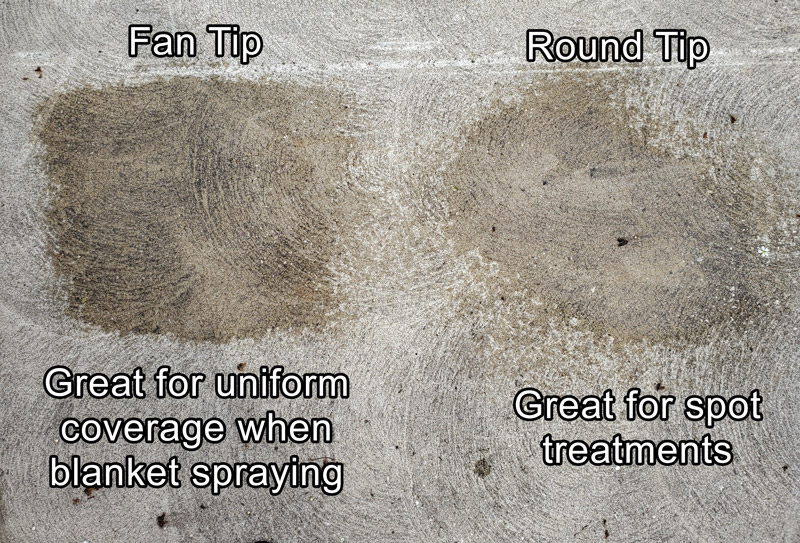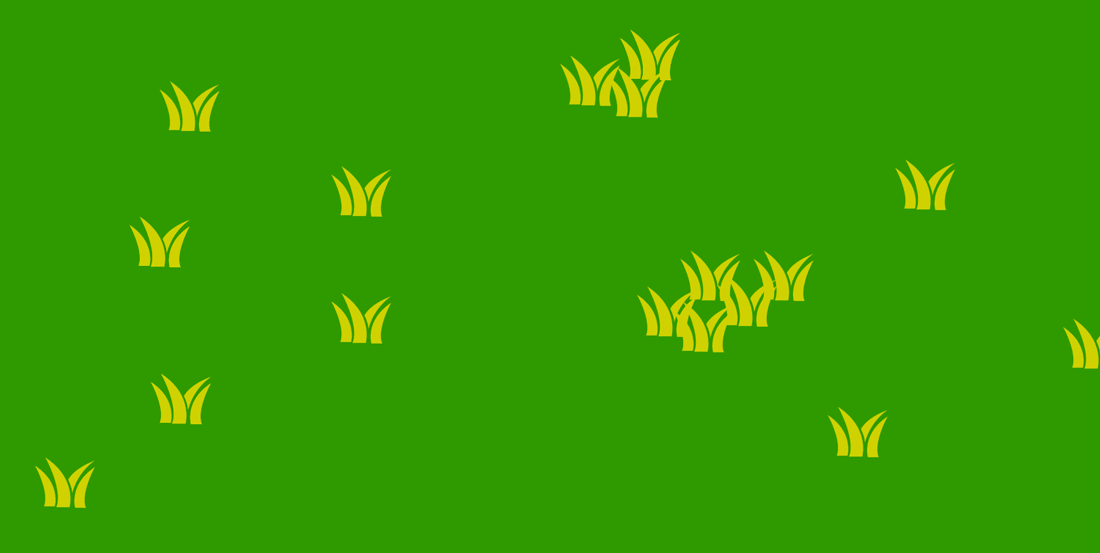A spot application (or “spot treatment”), is when you spray only the problem weeds in your yard. This generally doesn’t apply to fungicides or insecticides, which are typically treated via broadcast applications. Additionally, this does not apply to pre-emergent herbicides. Spot applications only apply to liquid post-emergent applications.
Table of Contents- Sprayer Nozzle Selection
- Marking Dye
- Surfactant
- Step 1: Tools Needed
- Step 2: Mixing the Solution
- Step 3: Spraying the Treatment
- Bonus: Mixing Your Own 32 Oz Bottles of Weed Killer
Spot treatments are mixed by amount of product x volume (i.e. 2 fl oz per gallon or 0.5 fl oz per quart).
Sprayer Nozzle Selection
You can generally use any sprayer nozzle for spot spraying, but a round adjustable tip is a good bet. That way you can make adjustments to how much product is coming out on the fly.


Marking Dye
Blue marking dye is also useful for seeing spots that you’ve already sprayed. A small 8oz bottle will last you a very long time, considering you only need a small splash of dye to make a big difference.
Surfactant
Surfactant is used to increase the efficacy of herbicides. Go here to learn about Surfactants.
Step 1: Tools Needed
Okay, now that we know the basics of a spot treatment, let’s follow some examples.
What you'll need:
- Measuring cup (optional)
- Sprayer
- Blue marking dye (optional)
- Surfactant (not used pre-emergent, necessary for post-emergent except for SpeedZone)
Homeowner
Have to pump to keep pressure
DIYer / Professional
Less refills
Lawn Dork™
Consistent pressure and flow
Step 2: Mixing the Solution
Example A: Label Rate is 2 fluid ounces per 1 gallon of water
The label rate states to mix 2 fluid ounces of herbicide into 1 gallon of water.
Say you want to mix 4 gallons of product. That’s a good amount of to cover about a 10,000 square foot area that has about 25% weed coverage. Regardless, if you do your own treatment costs on my website, you will only be losing out on less than a dollar if you make too much.
If you don’t want to do the math yourself, use this simple calculator. I’ll include it below for your convenience:
| # of Units | Cost Per Unit | Units Needed | Application Cost |
|---|---|---|---|
Here’s the simple math for educational purposes:
2 fluid ounces * 4 (4 times the rate for 1 gallon to make 4 gallons)
= 8 fluid ounces
So mix 8 fluid ounces of product into 4 gallons of water. If you’re spraying already existing weeds (post-emergent), add 2x the amount of herbicide in surfactant. So in this example, you’ll also want to add 16 fluid ounces of surfactant. A splash of blue marking dye and you’re ready to go.
Like I said, there are many calculators on this site to make the math much more convenient for you.
Example B: Label rate is a 1% solution
The label rate is a 1% solutionThis one is a bit trickier and involves a bit more math. You’ll have to make a water / herbicide solution that is 1% herbicide and 99% water.
Say you want to make 1 gallon of 1% solution.
That means you need to add 1% of 1 gallon of herbicide to 1 gallon of water.
1% * 1 gallon
= 0.01 gallons
Now that’s not very convenient to measure. You’d have to go to Google to figure out a more convenient way to measure 0.01 gallons.
Luckily, I have many calculators to make it easy for you. I’ll include the spot treatment one here... enter the label rate and how much product you want to mix.
| # of Units | Cost Per Unit | Units Needed | Application Cost |
|---|---|---|---|
Now that was a lot easier, huh? Just do 2x the amount of herbicide product in surfactant for post-emergent applications, some blue marking dye, and you’re good to spray.
Step 3: Spraying the Treatment
Doing a spot treatment is simple. Simply walk your property making sure you cover every area. Walking in a consistent pattern helps. Spray weeds along the way!

Bonus: Mixing Your Own 32 Oz Bottles of Weed Killer
You can mix your own 32 oz bottles of weed killer and save 90% on buying premixed weed killers.
What you’ll need is:
- Empty spray bottles
- Your herbicide of choice
- Measuring implements that can measure a small amounts of herbicide. We’ll be using concentrate, so ultimately using a very small amount of the bottle.
Using the same calculator, put in the label rate from the herbicide label and input that you want to make 1 quart (32 oz) of final solution.
| # of Units | Cost Per Unit | Units Needed | Application Cost |
|---|---|---|---|
That was easy, right? Find your herbicide on the website, and you’ll see that this method often costs less than $1.00 to make your own spray bottle that can last you months.
